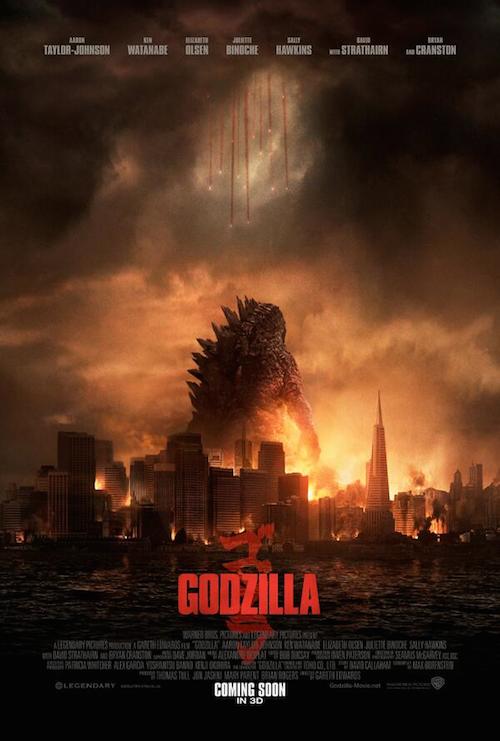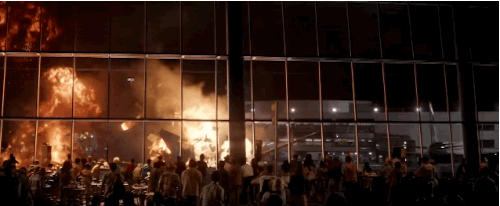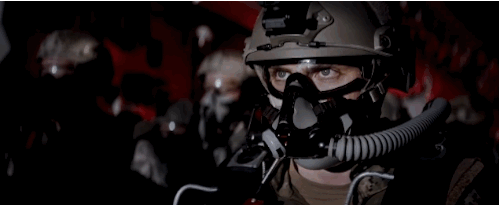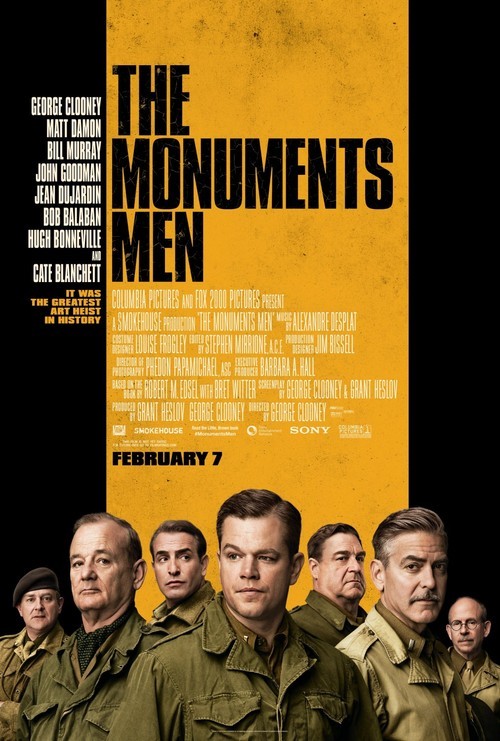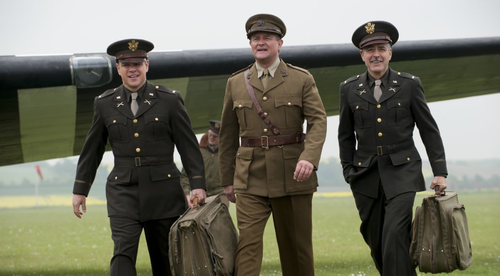Despite Its Overly Straightforward Plot, Predictable Dialogue, and Questionable Performances, Its Approach towards the Primary Goal of Sensory Stimulation Places Gareth Edwards’ Summer Action Flick Godzilla in a League of Its Own
In a decade where every summer, theaters are overstuffed with bland, gratuitously dynamic, virtually indistinguishable blockbusters with “groundbreaking” visual effects (are they really?), you might think that Godzilla is an entirely unnecessary reboot. And in some ways, it is. However, as the clichéd proverb goes, “Never judge a book by its cover.” Conceptually, Godzilla is just another big-budget, disaster-porn summer action flick. But practically, Godzilla proves that, with the right directorial vision and computer techniques, purely visceral large screen entertainment may almost be a poetic language of its own genre. Almost.
It is safe to say that the first half of Gareth Edwards’ reboot is too brutal for redemption. A disappointingly contrived performance from Bryan Cranston and an ambiguous, unsatisfying subplot introduction from Ken Watanabe and Sally Hawkins start the film off with a peculiarly sour taste. Furthermore, cheap and predictable dialogue not only devaluates the main characters, but leaves us impatiently awaiting the on-screen arrival of our gargantuan reptilian hero. Clearly, human interaction and character development is not Edwards’ strong suit. This awkward approach towards the more character-driven aspects of the film is unsurprising, since it is expected from most contemporary action flicks. What hurts more, though, is that during its first half, Godzilla shows glimpses of potentially smart writing that just never fully pan out. To some, this almost outside-the-box writing will be enough to trudge through the first half. To others (i.e. me), it’ll simply make that hour more difficult to watch.
The real joy, however, comes from the second hour. Edwards puts his animating crew to the test, producing ridiculously engaging action scenes that hit the fine border between organic and inorganic catastrophe and monster head butting. The sets are populated with disposable bystanders, precarious structures, and obstructive buildings that are ripe for decimation. And sure, although someone makes the occasional successful effort to save an innocent child (or school bus of children) from total annihilation, Edwards recognizes that humans are just pawns in the stimulating chess match that is taking place on screen. Those scenes are exciting, but what we really want to watch (and what Edwards sets us up to anticipate) is the kings and queens duke it out – Godzilla vs. prehistoric thirty-story flying Alien-esque radioactive parasites. The film’s action scenes are somewhat elegant in their nature. Tension wires snap and whip around as a parasite awakens and escapes its stronghold in a dynamic and organic manner that surpasses the clunky, robotic Rock’em Sock’em scenes in the Transformers series. Godzilla knocks over a stationed plane and passengers ogle in terror from an airport as aircrafts slowly fall into each other and explode in a mesmerizing domino sequence. It all comes across like a crudely destructive CGI ballet. And if you can’t enjoy Edwards’ eye for visual entropy, then you don’t know how to appreciate the magic of contemporary digital filmmaking.
Sound also plays a major factor in creating the exhilarating rush that makes this movie so distinctive from similar blockbusters. In an interesting but successful move, Alexandre Desplat (The Curious Case of Benjamin Button, Fantastic Mr. Fox, The King’s Speech, The Tree of Life) was hired to compose the original soundtrack. His pieces add a traditional but vivacious atmosphere to the primarily visual action scenes, grounding them more to classic action cinema. The Kubrick-esque inclusion of György Ligeti’s micropolyphonic music in the aerial drop scene also proves to be a curious but more than satisfying decision. The sound mixing is very high quality, coupling with the over-the-top visuals to achieve an ultimate over-the-top feel. In the end, Godzilla equally overwhelms and underwhelms its audience but still proves to be a more than capable summer action flick that you won’t feel 100% guilty for watching. Let’s hope the rest of the season’s action movies follow suit.
FINAL SCORE: 3½ out of 5 stars (raw score: 67.5, between “a decent watch” and “pretty good”)
Godzilla was released by Warner Bros. Pictures on May 16, 2014
